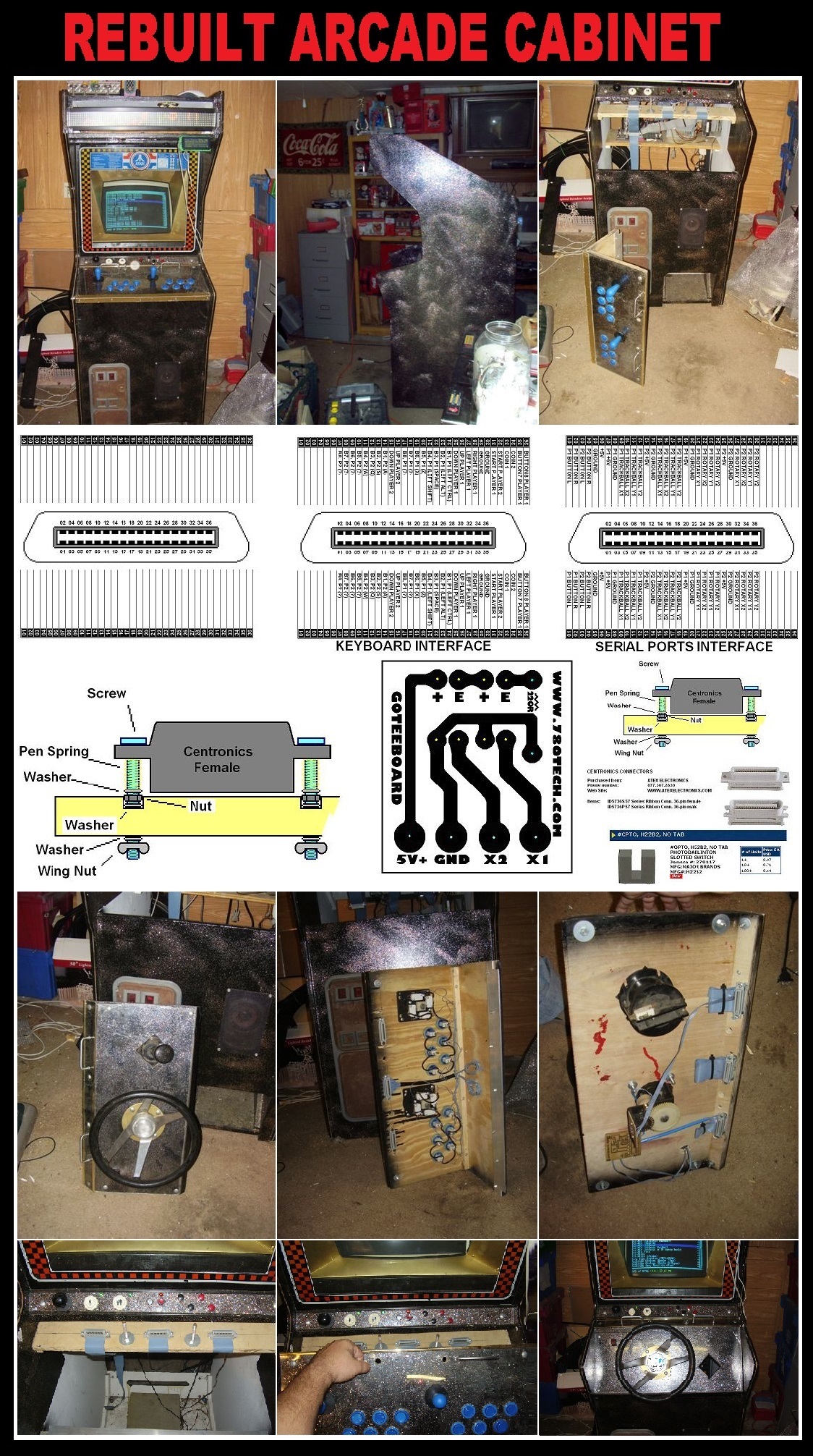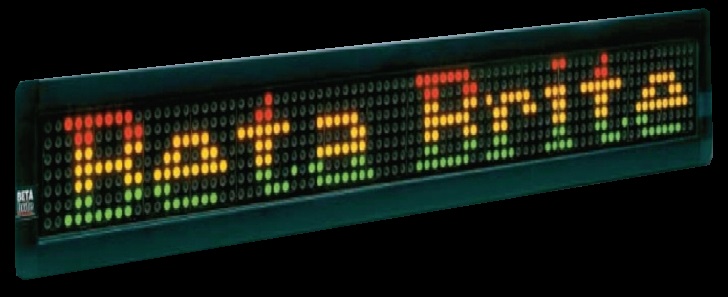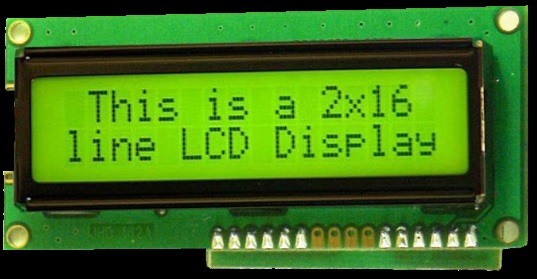![]()
RGB MATRIX INTEGRATION IN TO ARCADE MACHINE EMULATOR CABINET
A BIT OF 20 YEAR OLD HISTORY
I always found a fascination with electronics, having helped my father assemble and troubleshoot number of Heathkit projects at a very early age, it was only a natural progression to dive head first in to the fascinating world of computers when they hit the market big time back in the 70s & 80s
This was also the era when Arcade halls started sprouting left and right and many a teenager's days were dedicated to spending quarters and trying to beat their friend's high scores.
Fast forward 20 years. and A friend of mine offered up for $100 (still a sizeable amount at the time) a beaten up water damaged, non functional Pole Position cabinet
I JUMPED AT THE OPPORTUNITY

Many months were spent carefully disassembling this beast, piece by piece was removed, and used as a molds to trace and cut new pieces on Marine grade Plywood in order to bring the cabinet back to life.
VERY SPECIAL THANKS GOES OUT MY DEAR FRIEND DAVID RAREIGH WHO GRACIOUSLY PURCHASED AND DONATED THE PLYWOOD FOR THIS PROJECT And has spent years afterwards entertaining and helping with every pea brained Idea I have come up with, (poor guy had no clue what he was signing up for)
In order to make this a full blown Multicade Machine however I had to come up with a way to have exchangeable controls so I could use a standard Joystick layout or the original Race car steering wheel, gear shifter and pedals, to this end I designed a plug in system based on Centronic connectors locked in to place but also mounted on springs so they could wiggle a round a bit and form fit to whatever new control panel was being plugged in.
I opted for three of these plugs on each control pannel.
* One for Keyboard inputs (attached to an IPAC module on back end of cabinet) which plugged directly in to a DIN5 Keyboard connector (later on a PS2 keyboard connector)
* One for Driving wheel (or trackball) attached to a custom circuit I designed and etched based on a computer mouse which plugged in to a serial mouse port (later on PS2 mouse port)
* One for future possibilities and unassigned for the time being.

The Final touch came when I envisioned this Machine being able to send messages to an RGB Matrix displaying information regarding the current game being played, so I purchased a "relatively inexpensive" Betabrite sign off of eBay and set off to figuring out how it worked, the computer would send data to the sign through a serial port, which was easy enough to capture and analyze, after a few failed attempts I came up with some basic code that could successfully relay messages to the sign.

Although I had done extensive research on Arcade Machine emulators such as MAME I completely lacked the knowledge and expertise to implement this myself in any kind of functional way, I had also realized at this point that MAME also generated Databases with information regarding what kind of controller each game was designed to use and what buttons were assigned for each game, so I stopped and thought to myself.
"How cool would it be if somehow I could relay this information to the player before each game started." ?
Using the main RGB LED Matrix was out of the question it would be messy and overwhelming to display game name AND controller instructions all on the same screen but what if we attached a secondary display?
A small LCD (Liquid Crystal Display) capable of providing supplemental information to the player would work quite nicely.
There were a number of inexpensive Serial driven interfaces on the market at this time and if I could send information through one serial port.. it wouldn't be that much more work to send additional information through a second serial port so I decided to chance it and immediately set out to purchase one of these as well.

When it came to a worthy candidate for the Emulator Frontend there were not a great number of options, I had however stumbled upon a highly configurable Frontend by the name ArcadeOS and although it wasn't under active development I did find out an individual by the name Carlos Santillan had done a couple updates for it in recent history.
A couple Google searches later I had his information.
Mr. Santillan was open to the ideas and spent a great amount of time talking with me about the project and its development after hunting down more parts online and sending them to him we were on our way, we spent several weeks sending code back and forth and testing it out before we had a working prototype

To this date and to the best of my knowledge his machine and mine were the only 2 arcade machine prototypes capable of sending game AND Game play information to two separate Displays simultaneously.